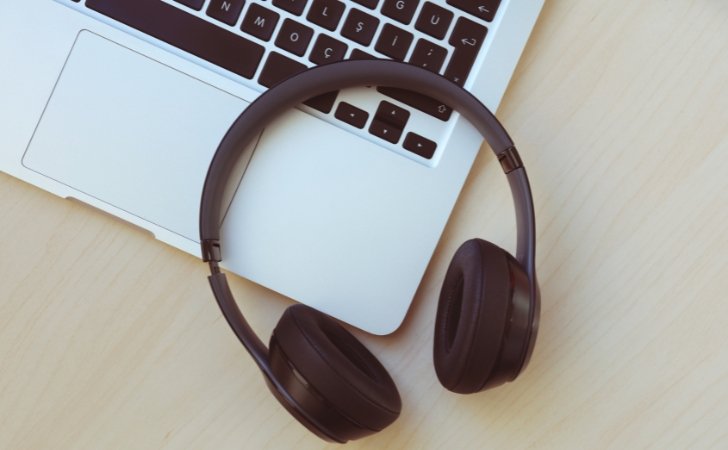AFFILIATE DISCLOSURE
This post may contain affiliate links. An affiliate means Escribr may earn referral fees if you make a purchase through our link without any extra cost to you. It helps to keep this blog afloat. Thanks for your support!
Did you know that by visiting this blog, you are doing good in the world? READ THIS.
In the world of transcription and audio typing, the right tools are crucial. Among these tools, headphones are perhaps one of the most important.
Quality headphones not only make a difference in sound clarity but also enhance focus and accuracy, helping you meet deadlines and maintain high standards.
In this guide, we’ll dive deep into why choosing the right audio typing headphones is essential, what features to look for, and our top recommendations.
Why Are Good Headphones Important for Audio Typing?
Transcription is all about precision. Even the most experienced typist can struggle if audio quality is poor.
Headphones designed specifically for audio clarity can make it easier to discern different speakers, catch subtle sounds, and pick up on accents or regional dialects that might be challenging to understand otherwise.
Investing in a quality set of headphones:
- Improves Accuracy: Clear audio helps you catch every detail, especially if your work involves legal or medical transcription where precision is essential.
- Reduces Fatigue: Transcription can be tiring, and constantly straining to hear sounds or voices wears out your ears. Good headphones reduce this strain.
- Enhances Productivity: High-quality sound allows you to work faster, as you’re not constantly rewinding to catch missed phrases.
- Boosts Focus: Noise-canceling or isolating headphones can block out distracting background noise, keeping you immersed in your task.
Key Features to Consider When Choosing Audio Typing Headphones
When selecting headphones for transcription, there are specific features to look out for to ensure that your choice will serve you well over long periods.
1. Sound Clarity and Detail
High audio quality is paramount.
Look for headphones that provide clear, detailed sound, especially in the mid and high frequencies.
Transcription often involves listening to conversations, so speech clarity is more important than deep bass.
Headphones with a flat or neutral sound profile can offer better accuracy, as they don’t overly emphasize any part of the sound spectrum.
2. Comfort for Long Hours
Transcriptionists often work for extended periods, so headphones need to be comfortable. Look for:
- Cushioned Ear Pads: Memory foam or other soft materials can reduce pressure and prevent ear fatigue.
- Lightweight Design: Heavier headphones can cause discomfort over long sessions.
- Adjustable Headband: This allows you to get the right fit, so the headphones sit snugly without causing headaches.
3. Noise Cancellation vs. Noise Isolation
For transcription, particularly in noisy environments, noise-canceling or isolating headphones can be a game-changer.
Here’s the difference:
- Active Noise Cancellation (ANC): These headphones use built-in microphones to cancel out ambient sounds. They are excellent for environments with constant background noise, like an office or café.
- Noise Isolation: Headphones with passive noise isolation create a seal around or in your ears, blocking out noise without electronic processing. They can be very effective and are often less costly than ANC options.
4. Wired vs. Wireless
While wireless headphones provide freedom of movement, wired options typically offer more reliable sound quality, especially at lower prices.
Many transcriptionists prefer wired headphones to avoid potential connectivity issues or battery concerns.
That said, if you prefer wireless, make sure the headphones have a long battery life and stable Bluetooth connection.
5. Durability
Since transcriptionists often use their headphones daily, they should be built to last.
Look for headphones with metal or reinforced plastic construction, replaceable ear pads, and a sturdy headband.
Detachable cables are also a plus, as they can easily be replaced if they wear out.
Types of Headphones for Transcription
There are several types of headphones on the market, each with its pros and cons for transcription work.
1. Over-Ear Headphones
These headphones cover the entire ear, providing excellent sound quality and comfort for long hours.
They are ideal for transcriptionists who prioritize comfort and sound quality.
However, they may feel bulky for some users and might not be ideal if you need to stay aware of your surroundings.
2. On-Ear Headphones
On-ear headphones rest on top of your ears rather than covering them.
They are typically lighter than over-ear options but may let in more ambient sound, making them less ideal for noisy environments.
3. In-Ear Monitors (IEMs)
For transcriptionists on the go, in-ear monitors can be an excellent choice. They are portable and provide good sound isolation.
However, they might not be as comfortable for extended use, especially if they don’t fit your ears well.
Top Recommendations for Audio Typing Headphones
Here are some of the best headphones for transcriptionists, carefully selected based on their sound quality, comfort, and overall suitability for audio typing.
1. Sony WH-1000XM4 (Wireless Over-Ear)
The Sony WH-1000XM4 is a fantastic choice if you’re looking for high-quality sound and excellent noise cancellation.
It’s wireless, but the battery life is excellent (up to 30 hours), and the sound quality is detailed and well-balanced.
These headphones are also lightweight and come with plush ear pads, making them comfortable for long typing sessions.
2. Audio-Technica ATH-M50x (Wired Over-Ear)
The ATH-M50x headphones from Audio-Technica are popular among professionals for their detailed sound and durable design.
They provide a balanced sound profile with excellent clarity, making them ideal for transcription.
The ear pads are comfortable, and the headphones come with detachable cables, which adds to their longevity.
3. Bose QuietComfort 35 II (Wireless Over-Ear)
Bose is well-known for noise cancellation, and the QuietComfort 35 II lives up to this reputation.
These headphones are wireless, with an ANC feature that effectively blocks out background noise, allowing you to focus on your typing.
The sound quality is great for listening to spoken audio, and they’re also comfortable for long periods.
4. Sennheiser HD 280 Pro (Wired Over-Ear)
For those on a budget, the Sennheiser HD 280 Pro is a solid choice.
These wired headphones offer great sound isolation and clarity, with a neutral sound profile that’s perfect for audio typing.
The headphones are durable, and while they might feel a bit bulky, they’re comfortable enough for long hours.
5. Shure SE215 (In-Ear Monitors)
If you prefer in-ear monitors, the Shure SE215 offers excellent sound quality and isolation.
They’re compact and portable, and the sound is clear and detailed, making them suitable for transcription.
These headphones might take a little time to get used to if you’re not accustomed to in-ear monitors, but they’re a great option for working in a busy environment.
Tips for Maintaining Your Headphones
To ensure your headphones last as long as possible and deliver the best audio quality, keep the following maintenance tips in mind:
- Clean Them Regularly: Dust and earwax can build up on the ear pads or in the ear tips, affecting sound quality. Use a soft cloth and, if applicable, replaceable ear tips.
- Store Them Properly: Avoid leaving your headphones in extreme temperatures or throwing them in bags where they can get tangled or damaged.
- Replace Parts as Needed: Many headphones come with replaceable ear pads and cables. Keeping these parts fresh can improve comfort and sound quality.
Wrap-Up
In transcription work, the importance of good headphones cannot be overstated.
They’re essential tools that affect not only your work quality but also your comfort and efficiency.
By choosing headphones that provide clarity, comfort, and noise isolation, you can make a huge difference in your daily productivity and accuracy.
Whether you’re just starting out in transcription or you’re an experienced audio typist looking to upgrade, investing in the right headphones is a decision you won’t regret.
Each of the headphones mentioned here offers unique features to suit different preferences and budgets.
From over-ear models that provide immersive sound to in-ear monitors for those who need portability, there’s an option for every type of transcriptionist.
Take the time to consider your working environment, budget, and comfort needs, and you’ll find the perfect headphones to accompany you on your transcription journey.











